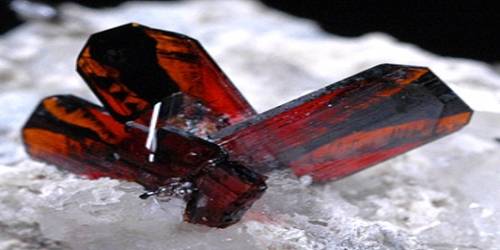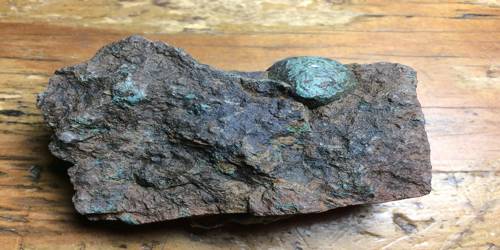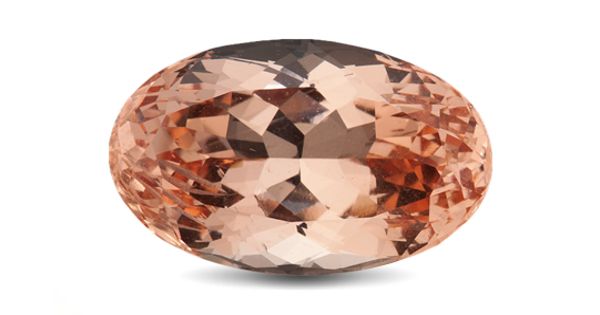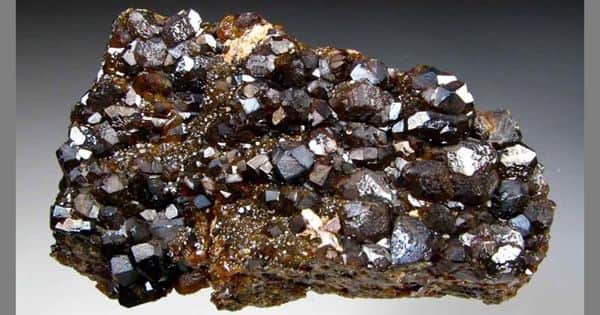Brookite is the orthorhombic variant of titanium dioxide, TiO2, which occurs in four natural polymorphic forms (minerals with the same composition but different structure). It was named after Henry James Brooke (1771–1857), an English crystallographer and mineralogist. At temperatures above about 750°C, brookite will revert to the rutile structure.
Brookite is rare compared to anatase and rutile and, like these forms, it exhibits photocatalytic activity. It has a larger cell volume than either anatase or rutile, with 8 TiO2 groups per unit cell, compared with 4 for anatase and 2 for rutile. Iron Fe, tantalum Ta, and niobium Nb are common impurities.
General Information
- Category: Oxide minerals
- Formula: TiO2
- Crystal system: Orthorhombic
- Crystal class: Dipyramidal (mmm)
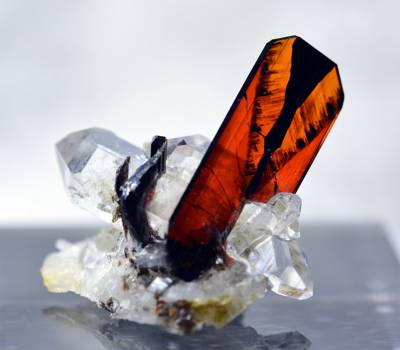
Properties
Brookite can be identified in the field by its color variations, such as brown, light brown, dark brown, dark reddish-brown, and orange. The mineral has a Mohs hardness of 5 1⁄2 to 6, between apatite and feldspar. This is the same hardness as anatase and a little less than that of rutile (6 to 6 1⁄2). The specific gravity is 4.08 to 4.18, between that of anatase at 3.9 and rutile at 4.2.
- Formula mass: 79.88 g/mol
- Color: Deep red, reddish brown, yellowish brown, brown, or black
- Crystal habit: Tabular and striated, pyramidal or pseudohexagonal
- Cleavage: Poor on {120}, in traces on {001}
- Fracture: Subconchoidal to irregular
- Tenacity: Brittle
- Mohs scale hardness: 5 1⁄2 to 6
- Luster: Submetallic
- Streak: White, greyish or yellowish
- Diaphaneity: Opaque to translucent
- Specific gravity: 4.08 to 4.18.
Occurrence and associations
Brookite occurs in an accessory mineral in alpine veins in gneiss and schist; in contact metamorphic zones and hydrothermal veinlets; and in a common detrital mineral. It is an accessory mineral in alpine veins in gneiss and schist; it is also a common detrital mineral. Associated minerals include its polymorphs anatase and rutile, and also titanite, orthoclase, quartz, hematite, calcite, chlorite, and muscovite.
The type locality is Twill Maen Grisial, Fron Olau, Prenteg, Gwynedd, Wales, UK, and in 2004 fine brookite crystals were found at Kharan, in Balochistan, Pakistan, together with brookite and rutile inclusions in quartz.
Information Source:
